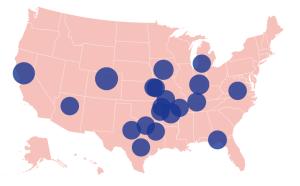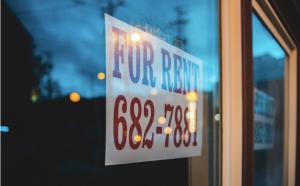Subletting your rental: The full breakdown
Dwellsy is a Cashay content contributor. It’s also an apartment-listing site that provides easy-to-use tools to find, sort, and share the homes you like.
You’ve probably heard the term “sublet” before, but you might not know what it means. As the tenant of a rental, subletting might be a useful tool in your housing belt, especially if you leave or plan to leave your apartment for a long period of time. Here’s what to know.
What is Subletting?
Subletting, or subleasing, allows the tenant of a rental, or sublessor, to rent out their apartment to someone else, or the sublessee, while the lease is still in the original tenant’s name. It’s commonly done when someone has to move out before their lease is up or if someone has to leave their rental for an extended period of time. It helps the sublessor avoid breaking their lease when they need to leave, and it saves them from having to pay rent on an apartment they’re not living in.
Why Should You Sublet an Apartment?

There are several reasons you might want to sublet an apartment. Here are a few of the biggest ones:
You won’t break your lease: This is probably the most important reason you might want to sublet your apartment. Breaking a lease can be a huge pain. At its worst, it could come with legal action from your landlord or a mark on your credit report. In order to avoid this hassle, subletting is a good alternative option. It could turn out to be much less painful than figuring out how to break your lease.
You’ll save money: You don’t want to be paying for a place you’re not living in. Instead of buying out your lease or something similar, subletting your apartment allows you to save most or all of the money you would otherwise have to pay because your sublessee will take over your remaining payments. If you negotiate correctly, this will include utilities and whatever else you usually pay monthly, so you won’t lose out.
Could ease concerns about a robbery: If you’re planning to leave your apartment for a long stretch of time and most of your things will be in the apartment, you might be concerned about a potential robbery. It’s an understandable concern and having someone living in the apartment might help to alleviate it. A physical presence could deter a potential robber from breaking in, and obviously, your sublessee would also be concerned about their own belongings, so they would be equally invested in keeping your rental safe.
What Are Some Potential Problems with Subletting?

Subletting an apartment also comes with a fair share of risks. These can be avoided as long as you understand what they are and how to navigate them. Here’s what you want to be careful about if you’re going to sublet an apartment:
Finding the right person: One of the biggest challenges you could come across in the process of subletting an apartment is finding the right sublessee. Ideally, your sublessee will be someone you trust, because they’re going to be living in your space. You can sublet to a stranger, of course, but it will take time and energy to adequately screen people. Going with a friend or family member is the safest move, although this considerably narrows the pool of people you’ll consider.
Your reputation is on the line: When you sublet an apartment, you’ll probably be responsible for paying for any damages which your sublessee might incur. If your subletting situation goes awry, it could negatively impact your reputation as a tenant in the area. Other tenants in the building also might not get along with your sublessee, and this could make your living situation less pleasant upon your return. This is another reason why finding the right sublessee is so essential.
Your landlord might not want you to: It’s possible that your landlord has a clause in your lease about not allowing you to sublet your apartment. This isn’t the be-all-end-all of your subletting dreams––sometimes you can work out a subletting agreement with your landlord just by speaking to them and agreeing on certain conditions.
Other times, your state laws may allow you to bring your landlord to court for not allowing you to sublet to someone equally as qualified as you. Either way, though, your landlord’s desires could potentially stand in the way of a smooth subletting process. Checking your lease carefully and communicating with your landlord will help you to avoid this from happening.
Now that you have a better understanding of what subletting is and what the pros and cons are, hopefully you can make an informed decision about whether it’s the right choice for you. Happy renting!
Read more information and tips in our Renting section





